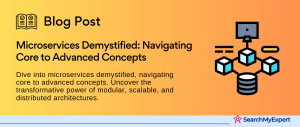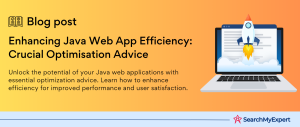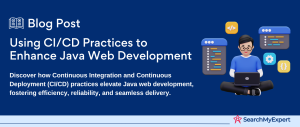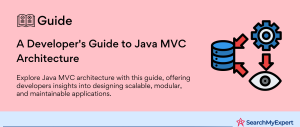Understanding the Spring Framework: A Comprehensive Guide
The Spring Framework is a powerful tool for building Java applications, known for its robust architecture and efficiency in developing enterprise-grade applications. This introductory section delves into the basics of the Spring Framework, exploring its history, purpose, and popularity. Additionally, we highlight the key benefits of using Spring, including improved development speed, code maintainability, and testability.
What is the Spring Framework?
A Brief History
The Spring Framework was first released in 2002 by Rod Johnson and has since evolved into a cornerstone of Java application development. Its conception was a response to the complexities of early Java frameworks, offering a more simplified and flexible approach. Over the years, Spring has grown to include a wide range of functionalities, becoming a comprehensive ecosystem for Java developers.
Purpose and Popularity
The primary purpose of the Spring Framework is to simplify the complexity of enterprise Java development. It achieves this by providing a lightweight container, offering various configuration methods, and supporting multiple frameworks and technologies. The popularity of Spring lies in its ability to facilitate the creation of high-performance, reusable code. Its adoption across the industry is a testament to its effectiveness, with many organizations relying on Spring for their critical applications.
Benefits of Using Spring
Improved Development Speed:
- Rapid Prototyping:
Spring’s convention over configuration approach enables rapid prototyping and faster development cycles. - Comprehensive Ecosystem: The presence of numerous sub-projects, like Spring Boot and Spring Cloud, accelerates the development process by providing ready-to-use functionalities.
Code Maintainability:
- Modular Architecture: Spring promotes a modular architecture, making it easier to manage and update codebases.
- Clear Separation of Concerns: Its design encourages a clean separation of concerns, resulting in more maintainable and scalable applications.
Enhanced Testability:
- Dependency Injection: This core feature of Spring simplifies the process of testing applications by allowing for easy injection of mock implementations.
- Spring Test Module: Offers a comprehensive testing framework that supports unit testing and integration testing, enhancing the overall quality and reliability of the applications.
Core Concepts of the Spring Framework
In the realm of software development, the Spring Framework is celebrated for its innovative approach to managing Java applications. This section delves into the core concepts that form the backbone of Spring: Dependency Injection (DI), Beans, and Inversion of Control (IoC). These principles not only revolutionize how developers manage object dependencies and application architecture but also enhance the overall efficiency and scalability of applications.
Dependency Injection (DI): Automating Object Dependencies
The Essence of DI in Spring
Dependency Injection is a design pattern that Spring utilizes to inject dependencies into objects rather than having them construct their dependencies themselves. It’s a cornerstone of the Spring Framework, enabling developers to create loosely coupled and easily testable code.
How Spring Manages Dependencies
- XML-Based Configuration: Initially, Spring managed dependencies through XML configurations, allowing developers to define beans and their dependencies outside the Java code.
- Annotation-Based Configuration: With advancements, Spring introduced annotations like @Autowired, simplifying the process of dependency injection and making the code more readable.
Advantages of DI in Spring
- Simplified Unit Testing:
By decoupling the components, DI facilitates easier unit testing. - Loose Coupling: Enhances flexibility and reusability of code.
- Centralized Configuration: Provides a centralized point for managing dependencies, making the application easier to maintain.
Beans: The Building Blocks of Spring
Understanding Beans in Spring
In Spring, Beans are the fundamental building blocks. They are objects that are instantiated, managed, and wired together by the Spring IoC container.
Lifecycle of a Bean
- Instantiation:
Beans are created by the container. - Populating Properties: Dependencies and properties are injected.
- Bean Initialization:
Custom initialization logic, if any, is executed. - Use in Application:
The bean is ready for use within the application. - Destruction: When the container shuts down, beans undergo clean-up processes.
Types of Beans
- Singleton:
A single instance per Spring IoC container. - Prototype:
A new instance every time a bean is requested. - Other Scopes: Request, session, and global session scopes for web applications.
Inversion of Control (IoC): Shifting Control from Code to Configuration
What is Inversion of Control?
IoC is a principle where the control of objects is transferred from the program code to a container or framework. In Spring, IoC is achieved through the use of a container that manages the lifecycle and configuration of application objects.
Benefits of IoC in Spring
- Decoupling of Code: Reduces dependencies among components.
- Ease of Configuration:
Changes in dependencies can be managed without modifying the code. - Enhanced Modularity: Promotes a more modular and maintainable code structure.
Modular Architecture in the Spring Framework
The Spring Framework stands out for its modular design, offering a suite of modules that cater to various aspects of application development. This section focuses on the core and optional modules of Spring, providing insights into their functionalities and guiding developers on choosing the right modules for their specific application needs.
Core Modules: The Foundation of Spring
Configuration
- Central to Spring’s Functionality:
Configuration module is crucial for setting up the framework. - XML vs. Java-Based Configuration:
Offers both XML and Java-based configuration methods, catering to different developer preferences.
Bean Management
- Defining and Managing Beans: This module is responsible for defining and creating beans that are the backbone of any Spring application.
- Advanced Features: Includes features like lifecycle management and bean post-processors.
Dependency Injection (DI)
- Facilitating Loose Coupling:
DI module helps in injecting dependencies, promoting a loosely coupled application design. - Variants of DI:
Supports constructor injection, setter injection, and field injection.
Optional Modules: Extending Functionality
Spring’s architecture allows developers to include only those modules which are necessary for their application, thus avoiding the overhead of unnecessary functionalities.
Web Module
- Building Web Applications:
Simplifies the development of web applications. - Spring MVC:
A model-view-controller framework that is a part of the web module.
Data Access Module
- Database Operations:
Offers functionalities like transaction management and JDBC operations simplification. - ORM Integration:
Supports popular ORM frameworks like Hibernate, JPA, and JDO.
Security Module
- Comprehensive Security: Provides features for authentication, authorization, and protection against common vulnerabilities.
- Customizable Security: This can be tailored to meet specific security requirements of applications.
Messaging Module
- Facilitating Communication: Supports messaging in Spring applications.
- Integration with Messaging Systems: Compatible with systems like JMS, AMQP, and others.
Choosing the Right Modules for Your Application
Assessing Application Needs
- Understanding Requirements:
Carefully assess the specific needs of your application. - Performance Considerations:
Choose modules that do not add unnecessary overhead to your application.
Modularity and Scalability
- Future-Proofing Your Application: Pick modules that offer room for growth and scalability.
- Avoiding Over-Engineering: It’s essential not to over-engineer by including modules that aren’t needed.
Key Features and Functionalities of the Spring Framework
The Spring Framework, a powerhouse in the world of Java development, offers a plethora of features and functionalities that streamline and enhance application development. In this section, we will explore some of the key components: Spring MVC, Spring Data Access, Spring Security, and Spring AOP. These components not only simplify the development process but also bring robustness and efficiency to Java applications.
Spring MVC: Streamlining Web Application Development
Model-View-Controller (MVC) Pattern
- Structured Framework: Spring MVC is built on the MVC pattern, ensuring a well-structured and maintainable framework for building web applications.
- Separation of Concerns:
Each component (Model, View, and Controller) has a distinct responsibility, promoting cleaner code and easier maintenance.
Core Features of Spring MVC
- Flexible Mapping:
Offers powerful URL mapping capabilities. - Form Handling: Simplifies form submissions and validations.
- Internationalization: Supports multi-language applications.
Spring Data Access: Simplifying Database Interactions
Integration with ORM Platforms
- Support for JPA, Hibernate, and More:
The Spring Data Access module facilitates seamless integration with popular ORM tools, enhancing database operations. - Repository Abstraction: Simplifies data access logic with CRUD repository interfaces.
Transactional Management
- Declarative Transactions:
Allows developers to manage transactions declaratively, improving code readability and reducing boilerplate code. - Consistent Transaction Management: Provides a consistent programming model across different transaction APIs.
Spring Security: Fortifying Application Security
Authentication and Authorization
- Comprehensive Security Measures:
Spring Security offers extensive support for authentication and authorization, ensuring that applications are secure from unauthorized access. - Customizable Security:
Can be tailored to specific security needs, from simple web applications to complex enterprise systems.
Protection Against Common Vulnerabilities
- CSRF, XSS, and More:
Equipped to protect against common vulnerabilities like Cross-Site Request Forgery (CSRF) and Cross-Site Scripting (XSS).
Spring AOP: Managing Cross-Cutting Concerns
Aspect-Oriented Programming (AOP)
- Separating Concerns: Spring AOP helps in separating cross-cutting concerns (like logging, security, etc.) from the main business logic.
- Modularizing Aspects:
Allows for modularizing aspects of the application that cut across multiple classes and methods.
Benefits and Advantages of Modern Software Development Practices
Modern software development practices have revolutionized how developers create, test, and maintain applications. In this section, we’ll delve into the core benefits and advantages, including increased developer productivity, improved code quality, easier testing, and enhanced scalability and flexibility. These practices are not just technical improvements; they are pivotal in shaping the landscape of software development, offering substantial benefits for both developers and businesses alike.
Increased Developer Productivity
Faster Development:
- Use of Frameworks and Tools: By leveraging modern frameworks and tools, developers can accelerate the development process. Frameworks provide a structured foundation, reducing the need to write basic code from scratch.
- Automation:
Automation tools in software development, like continuous integration/continuous deployment (CI/CD) pipelines, automate repetitive tasks, leading to more efficient development cycles.
Less Boilerplate Code:
- Code Reusability: Modern practices encourage the use of modular code, which can be reused across different parts of the project or even in different projects. This significantly reduces the time spent writing and maintaining code.
- Standardized Templates: Using templates and pre-written code snippets for common functionalities helps in reducing the amount of boilerplate code.
Improved Code Quality
Cleaner Code:
- Coding Standards and Best Practices:
Adherence to coding standards and best practices ensures that the code is not only functional but also clean and maintainable. - Refactoring:
Regular refactoring helps in keeping the codebase clean and efficient, making it easier to manage and update.
Modular and Reusable Code:
- Modular Design: Emphasizing on modular design allows for separating concerns, making the code more organized and manageable.
- Component-Based Architecture: This approach enables developers to build applications as a collection of independent units, which improves maintainability and reusability.
Easier Testing
Decoupled Components:
- Unit Testing:
Decoupled components allow for easier and more effective unit testing, as each component can be tested independently. - Mocking and Stubbing:
Tools for mocking and stubbing facilitate testing by simulating the behavior of complex components.
Integration Testing:
- Testing Frameworks: Modern testing frameworks support integration testing, ensuring that different components of the application work well together.
- Continuous Testing:
Integration into CI/CD pipelines allows for continuous testing, ensuring that issues are identified and addressed early.
Scalability and Flexibility
Adapts to Different Architectures:
- Microservices Architecture:
The use of microservices architecture allows for building scalable and flexible applications that can easily adapt to changing business needs. - Cloud Integration:
Modern development practices are often designed with cloud integration in mind, facilitating scalability and flexibility.
Adapts to Different Technologies:
- Cross-Platform Development: Practices like cross-platform development enable applications to run on various platforms, increasing their reach and versatility.
- Latest Technologies:
Embracing the latest technologies, such as AI and IoT, can provide a competitive edge and open up new possibilities in application development.
Resources and Community: The Backbone of Spring Framework Success
The Spring Framework, renowned for its robust architecture and widespread use in enterprise applications, doesn’t just excel in its technical prowess. A key component of its success is the wealth of resources and the vibrant community that supports it. In this segment, we explore the comprehensive official documentation, the active developer community, and the extensive ecosystem that contribute to Spring’s standing as a premier framework for Java development.
Official Spring Documentation and Tutorials
In-Depth Guides:
- Official Documentation:
Spring’s official documentation is a treasure trove of information, covering every aspect of the framework. It’s known for being thorough and well-organized, providing clear guidance for both beginners and experienced developers. - Step-by-Step Tutorials: These tutorials are a boon for new learners, offering step-by-step guidance on using Spring for various applications.
Best Practices and Advanced Concepts:
- Code Samples:
The documentation includes practical code examples, demonstrating best practices and efficient implementation of features. - Advanced Topics:
For more seasoned developers, the documentation delves into advanced topics, ensuring a deep understanding of the framework’s capabilities.
Active Developer Community
Forums and Discussion Boards:
- Community Forums: Platforms like Stack Overflow and the official Spring forums are bustling with activity, where developers can ask questions, share knowledge, and troubleshoot issues.
- Interactive Learning:
Engaging with the community through these forums provides a practical, real-world understanding of how Spring is used in diverse scenarios.
Blogs and Online Publications:
- Expert Blogs:
Many experienced Spring developers maintain blogs where they share insights, tips, and the latest developments in the framework. - Community Contributions: Contributions from the community in the form of blogs, articles, and tutorials enrich the learning experience and keep the knowledge base updated.
Extensive Ecosystem of Third-Party Libraries and Tools
Integration with Tools and Libraries:
- Wide Compatibility:
Spring’s design allows for easy integration with a multitude of other tools and libraries, enhancing its functionality and flexibility. - Plug-and-Play Components:
The framework’s architecture supports seamless incorporation of third-party components, making it highly adaptable to various project needs.
Continuous Expansion:
- Community-Driven Development:
The active involvement of the community leads to the continuous expansion of Spring’s ecosystem, with new tools and libraries being developed and integrated regularly. - Up-to-date Solutions: This ensures that Spring remains at the forefront of technology, offering up-to-date solutions to developers.
Getting Started with Spring: Your Path to Building Robust Java Applications
Embarking on a journey with the Spring Framework is an exciting venture for any Java developer. This section aims to guide you through the initial steps of setting up your development environment, building your first Spring application, and pointing you towards further resources and learning opportunities. Whether you’re a seasoned Java developer or new to the world of programming, these steps will help you gain a solid foothold in using Spring effectively.
Setting Up Your Development Environment
Choosing the Right IDE:
- Eclipse and Spring Tool Suite:
Eclipse, with its Spring Tool Suite plugin, is a popular choice for Spring development. It offers a range of features specifically designed for Spring, enhancing productivity and ease of use. - IntelliJ IDEA:
Another excellent option is IntelliJ IDEA, known for its intelligent coding assistance, ergonomic design, and comprehensive support for Spring Boot.
Installing Spring Boot:
- Spring Initializr:
A great way to start is by using Spring Initializr. This web-based tool allows you to generate a basic Spring Boot project structure, with your chosen dependencies, in a matter of minutes. - Manual Setup: For a more hands-on approach, you can manually set up your Spring Boot project by including necessary dependencies in your Maven or Gradle build file.
Building Your First Spring Application
Creating a Simple Web Application:
- Hello World Example:
Begin with a simple ‘Hello World’ application. This involves setting up a Spring Boot project, creating a controller, and running your application to display a greeting. - Thymeleaf for Views:
Incorporate Thymeleaf into your project to manage server-side Java templates, making your application more dynamic.
Understanding Basic Concepts:
- Dependency Injection: Grasp the concept of dependency injection, a core principle in Spring, which allows for loose coupling and easier testing.
- Spring MVC:
Get familiar with Spring MVC, the framework’s web module, by creating controllers and views to handle HTTP requests and responses.
Exploring Further Resources and Learning Opportunities
Online Courses and Tutorials:
- Udemy and Coursera:
Platforms like Udemy and Coursera offer comprehensive courses on Spring, suitable for various levels of expertise. - Spring Guides:
The official Spring website provides a collection of guides covering a wide range of topics, from building RESTful services to securing your application.
Joining Developer Communities:
- GitHub and Stack Overflow:
Engage with other Spring users on platforms like GitHub and Stack Overflow. Contributing to open-source projects or solving issues can significantly boost your skills. - Local Meetups and Conferences:
Participate in local developer meetups and attend conferences to stay updated with the latest trends and network with fellow developers.
Conclusion:
As we conclude our comprehensive journey through the Spring Framework, it’s clear that Spring stands as a monumental pillar in the world of Java development. From its inception to its current state, Spring has evolved to meet the dynamic demands of modern software development, proving its resilience and adaptability.
The framework’s core strengths lie in its ability to simplify complex programming tasks, its robust ecosystem that encourages innovation and collaboration, and its commitment to improving developer productivity and code quality. Whether it’s through its inversion of control container, aspect-oriented programming capabilities, or its extensive array of modules catering to various enterprise needs, Spring offers a solution for almost every challenge in Java application development.
Stand out with custom Java solutions from our Java Development Service Firms.
Table of Contents
Toggle






